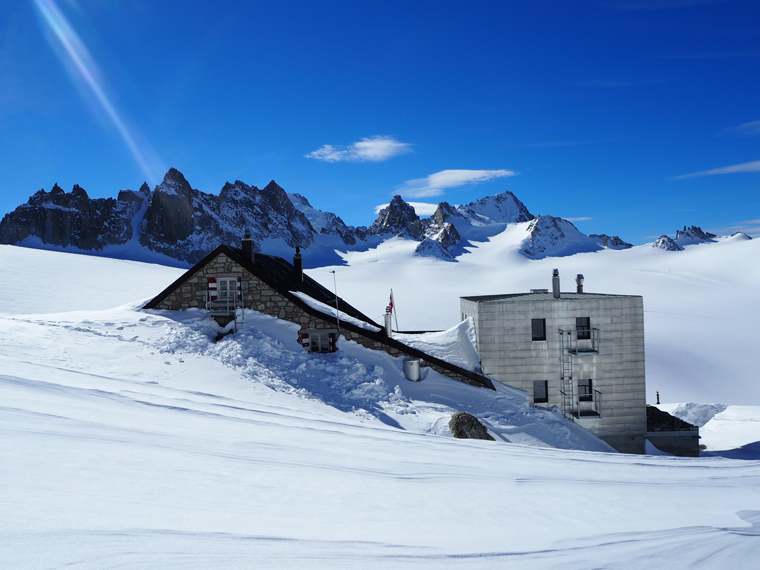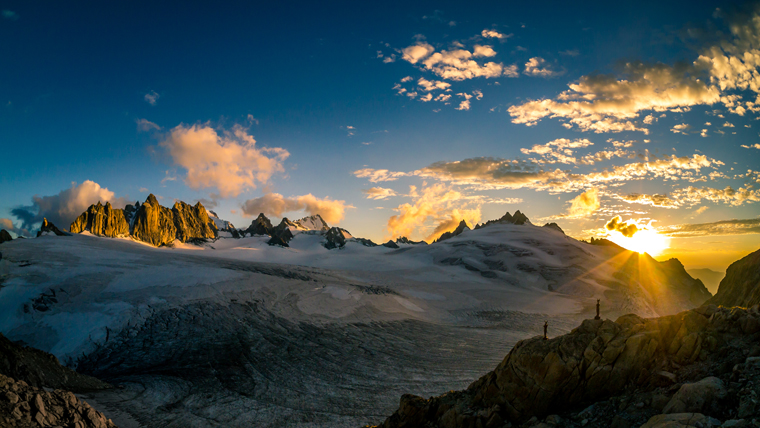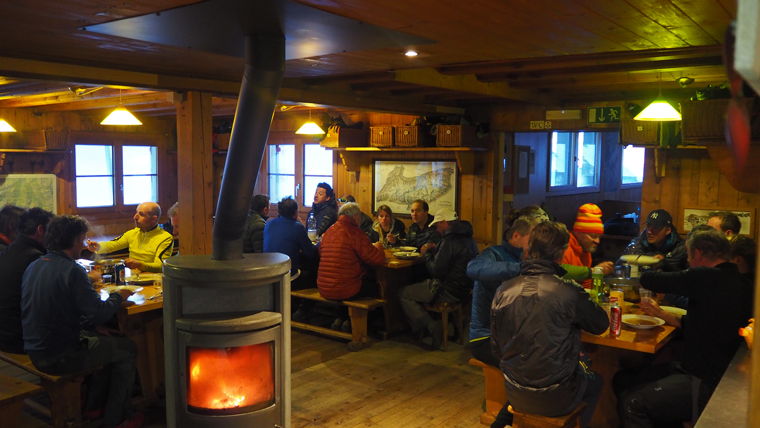A day in the life of a Haute Route hut guardian


Our day starts at about 5 o’clock in the morning for breakfast. We serve our guests fresh bread, jam, cereals, ham and cheese – good fuel to set them up for their day. Once they are gone, I think about what needs to be done for the day, talking through our plan with the team, which usually consists of me, my wife Mélanie, and a third employee. But before we get started on the chores, I try to take a nap for an hour or two. Then I feel refreshed and ready to work.

We spend the morning cleaning the dormitory, toilets, entrance way, dining room… Around 11am we get the dinner ready for the evening, which usually consists of a salad, soup, meat, dessert and homemade pastries – apple pie is a speciality. Then the three of us will have lunch together.
Thankfully we don’t have to melt snow for water during the winter, like some mountain refuges do. We have two big water tanks under the hut, which hold 10,000 litres each. We save the water during the summer, from the melting snow behind the hut that forms a stream. At the end of September, when we close the hut, the tanks must be full to have enough water when we re-open in March. But sometimes in August all the snow is gone and we then have a problem with low water supply.
It is sometimes hard to make our guests understand the process – they see snow all around, and wonder why there is no water. But no melting snow, no stream… no water.

Mélanie and I have been the guardians at the Cabane du Trient since 2010 – this will be our sixth season – though the hut has a much longer history. It was built in 1933, completely renovated in 1975 and enlarged in 2006 – it can now sleep 120 people altogether. It sits at 3170m altitude, near the French border and above the Trient glacier.
We spend five months at the hut each year – two during the winter, from March to April, and three during the summer, from June till mid-September. The rest of the year, we live down in the valley near Martigny.
What is the hardest thing about living at the hut? The schedule. Getting up early in morning and going late to bed. Answering questions (usually always the same) from the guests can get a bit tedious too. Like saying 50 times a day: “Sorry, we don’t have Wifi” or “No, there are no heaters in the dorms” or “Please leave your crampons and ice axe in the entrance, not in the rooms”.

I don’t really miss the creature comforts. It’s good to be up here, far from the stress of urban life and the crazy rhythm of the crowds down in the valley. Sometimes we miss being on our own, me and my wife, as there is always someone else with us, an employee, guests or friends who come to visit.
What is the best thing about living at the hut? Working hard for five months and then enjoying life as we want to. Once the hut is closed, we enjoy travelling, mountaineering and resting!
From about 2pm, people start to arrive. We welcome people between midday and 6pm during the winter, depending on the weather conditions along the Haute Route. Some days the hut is full and others we may only have 10 people staying, but usually we have around 40 to 50 people visiting at a time.
What advice would I give to a skier before they set off on the Haute Route? Take a few days off before you start the tour, resting at home or in Chamonix. Often people are exhausted from travelling or working, and are not prepared enough for a high-mountain trip in cold temperatures, their minds still caught up in their jobs back home.
It is also important to have good ski technique and little knowledge about mountaineering – for example, you should be fast at changing crampons, putting on skins, attaching skis to your backpack. Also, start the tour early: that way you will arrive at the hut in good time, so you can chill out, have a beer on the terrace and enjoy the view – a big white glacier and mountains in every direction.

What to pack? Don’t take a bag bigger than 35 litres – a heavy pack won’t help you on those long distances. Bring a liner sheet for sleeping in (we do not change the bed sheets every week). Don’t worry about bringing shower gel, because there are no showers! And you can also leave your cell phone in your bag, because there is no mobile signal and no Wifi up here in the hut – instead you can speak to your neighbour; you may even learn something interesting…
When our guests arrive at the hut, we welcome them, show them their dorms (we have 11 rooms, with between six and 22 beds in each), cook food if they are hungry, then it’s non-stop until 10pm.
We stay in the kitchen serving drinks, answering the phone… We have to be there for everyone. We serve dinner at 6.30pm, then wash the dishes, clean up the kitchen, prepare breakfast and make spiced ‘marche tea’ – sometimes 100 litres of it – to give our guests to fill their thermos or water bottle. And then we take a break before going to bed – after having had a génépi. Cheers! FL